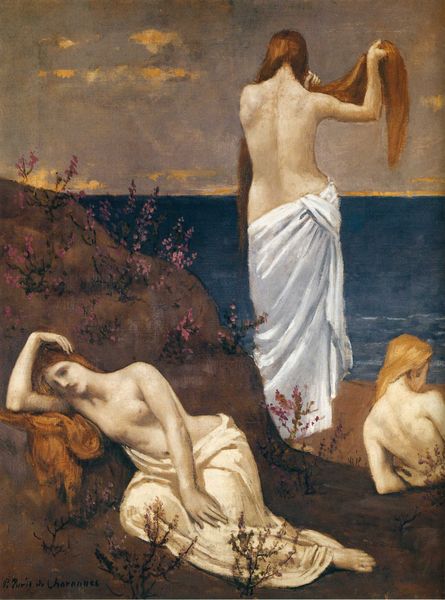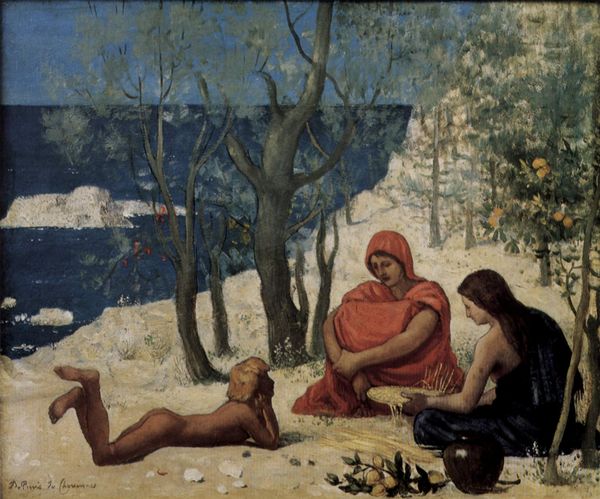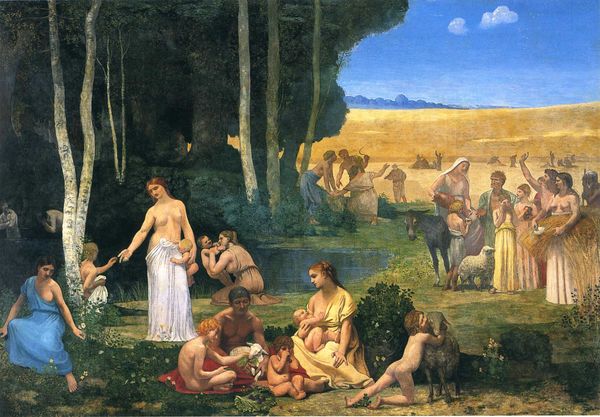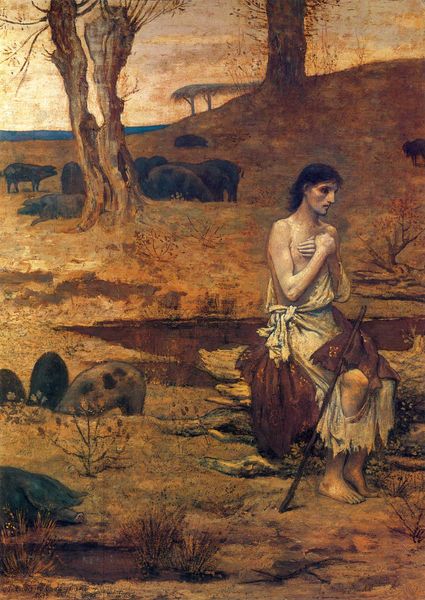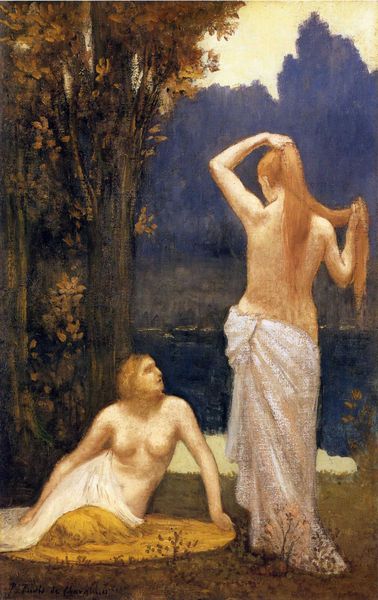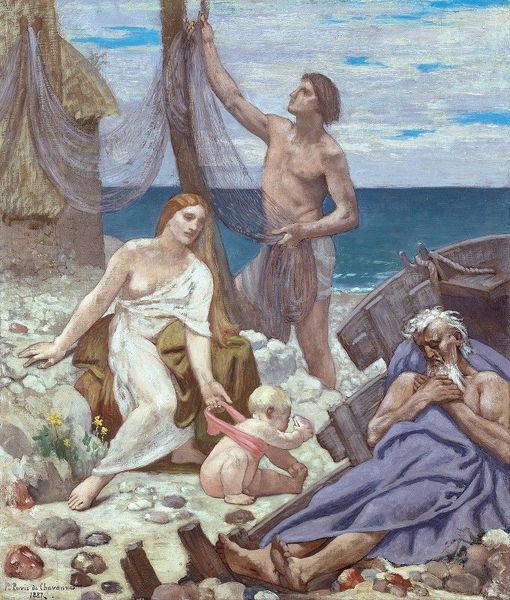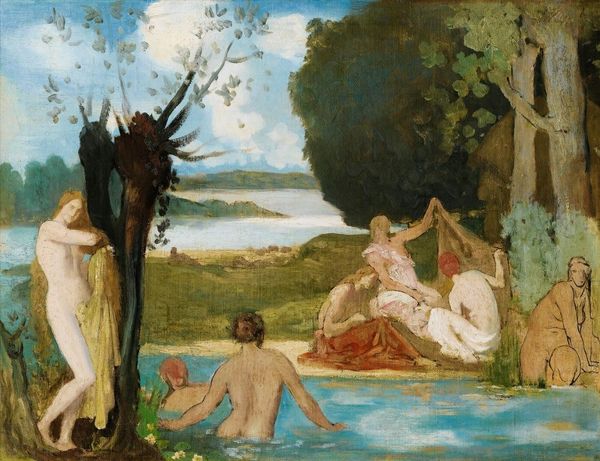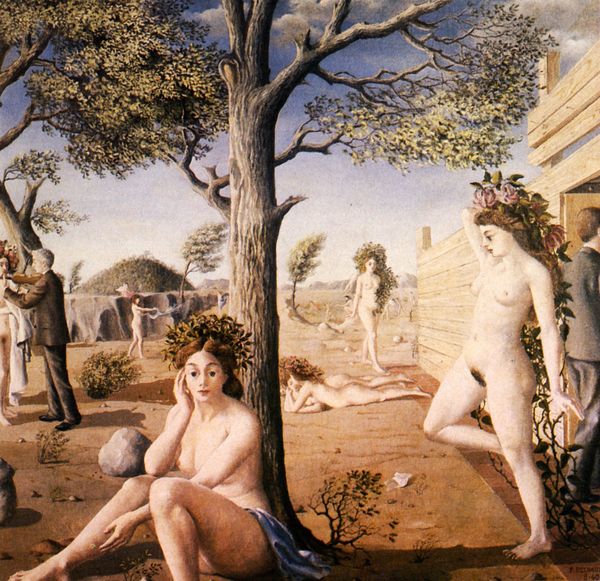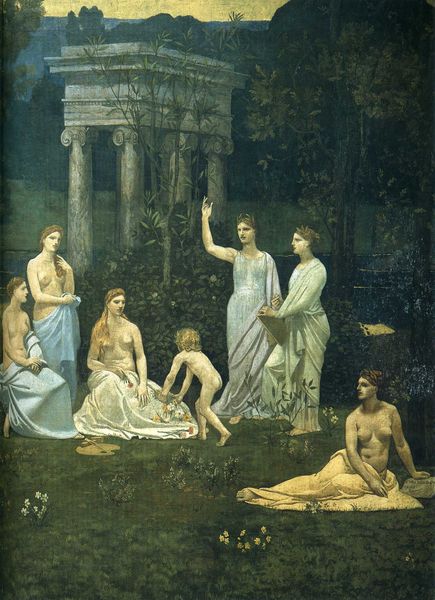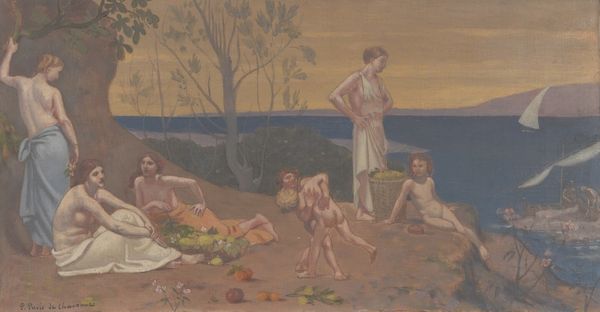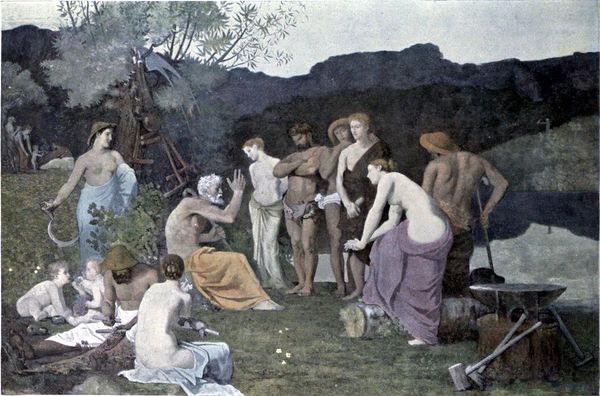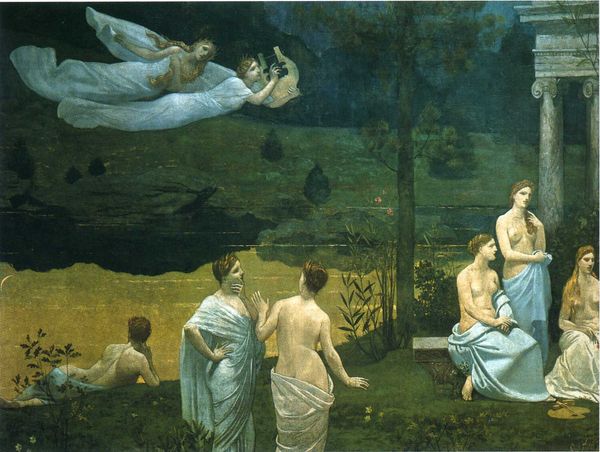
Copyright: Public domain
Curator: Welcome. We’re standing before a section of Pierre Puvis de Chavannes’ painting, "The Happy Land," created in 1882. Note the scale – the way it dominates the space. What's your initial take? Editor: There’s a somberness I didn't anticipate from the title. A stillness hangs over the scene, almost melancholic. It's evocative, but in a way that feels less like celebration and more like quiet contemplation. Curator: I’m drawn to the surface, and how he achieved it. Notice the flatness of the application, it appears to be oil paint on canvas with some form of gouache. This almost fresco-like quality results from the lean mixtures of paint that allows light to reflect through the various pigment layers and off the primed ground creating luminosity. There's a conscious decision to avoid traditional glazing and chiaroscuro to show his emphasis on surface and material. Editor: I see your point. I’m focusing more on how this deliberate simplicity acts as a kind of removal of artifice. How this technique and overall composition engage with broader notions of idealized beauty, specifically within the context of 19th-century academic art. It almost challenges the male gaze and prompts us to reflect on issues related to labor, body image and consumption. Curator: Absolutely, it’s about pushing against established techniques, and not accepting ready-made production processes of image making. His application deliberately calls attention to its artifice, rejecting academic ideals in its materiality. Editor: Exactly! There's something radical in that restraint, refusing to reinforce the objectification of the female form that dominated the artistic and social discourse of the time. Instead, we are asked to confront our preconceptions and biases about what constitutes beauty, leisure, and fulfillment. Curator: A fruitful exchange. Reflecting on “The Happy Land,” I see the artist challenging the status quo through materials. Editor: For me, it serves as an invitation to challenge those very foundations by engaging us critically, promoting self-reflection.
Comments
No comments
Be the first to comment and join the conversation on the ultimate creative platform.
